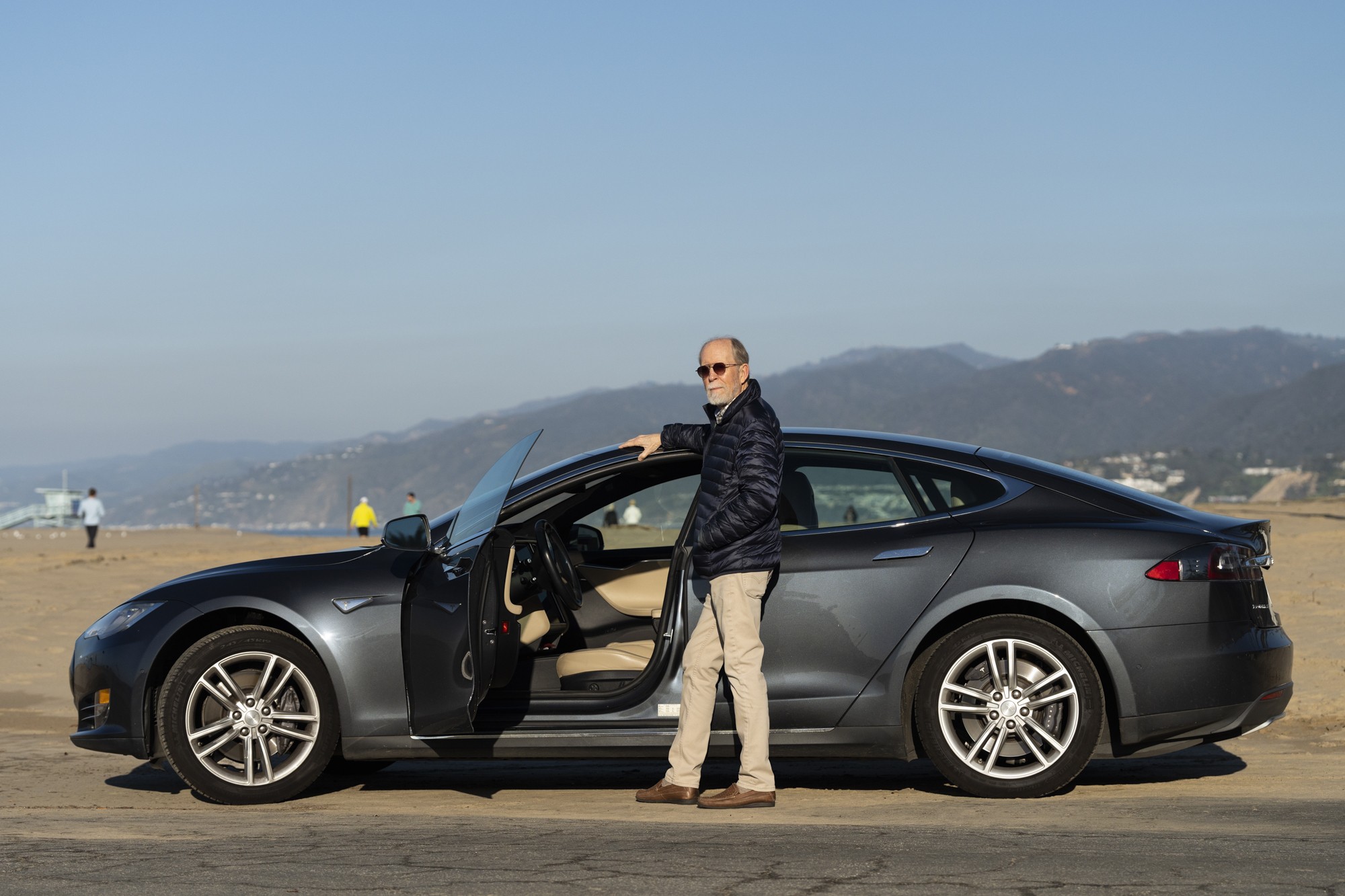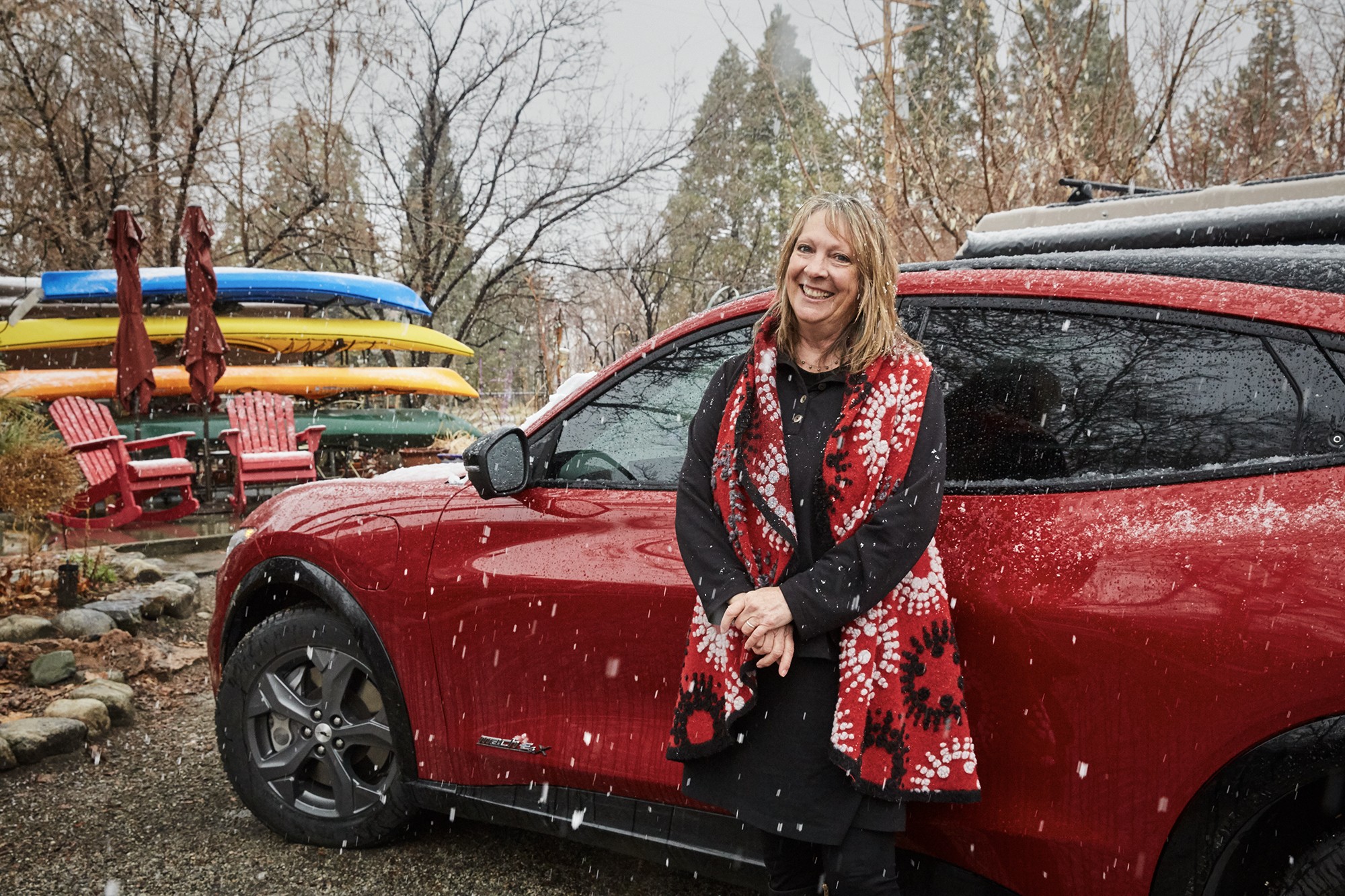Unveiling insights into the question of Who Buys Cars is a critical starting point for both consumers and industry professionals. At CARS.EDU.VN, we demystify car ownership trends, exploring factors such as demographics, income levels, and geographic locations that influence purchasing decisions. By analyzing these trends, CARS.EDU.VN provides valuable guidance for making informed choices in the ever-evolving automotive market. Dive into market analysis, ownership demographics, and the latest buyer preferences with CARS.EDU.VN.
1. Introduction: The Shifting Landscape of Car Buyers
Understanding who buys cars in today’s market is more complex than ever. Factors like socioeconomic status, geographical location, and technological preferences play pivotal roles. CARS.EDU.VN delves into these dynamics, offering a comprehensive analysis to help you understand the automotive market landscape. As the automotive industry evolves, shifts in consumer behavior drive significant changes, affecting everyone from manufacturers to individual buyers.
2. Demographic Overview: Who is Behind the Wheel?
2.1. Gender Dynamics: The Male-Female Ratio in Car Buying
Historically, men have dominated the car buying scene. However, women are increasingly influential. According to recent studies, while men still make up a slight majority (60-70%), women account for a significant 30-40% of new car purchases. This shift necessitates a more nuanced understanding of both genders’ preferences.
- Men: Often prioritize performance, technology, and brand reputation.
- Women: Tend to focus on safety, reliability, and practicality.
2.2. Age Groups: From Gen Z to Baby Boomers
Different age groups have distinct automotive needs and preferences.
- Gen Z (22-26 years): Value affordability, technology, and environmental impact. They are more likely to consider electric vehicles and shared mobility options.
- Millennials (27-42 years): Seek versatility, fuel efficiency, and advanced safety features. They often need vehicles that accommodate families and active lifestyles.
- Gen X (43-58 years): Prioritize reliability, safety, and comfort. They often have higher budgets and seek premium features.
- Baby Boomers (59-77 years): Emphasize comfort, safety, and ease of use. They may prefer larger vehicles with advanced driver-assistance systems.
2.3. Income Levels: The Affordability Factor
Income significantly influences car buying decisions. Here’s a breakdown of how different income levels impact vehicle choices:
- Lower Income: Buyers often opt for used cars or entry-level new models with a focus on affordability and fuel efficiency.
- Middle Income: These buyers can afford a wider range of new and used vehicles, often prioritizing value and practicality.
- Upper Income: Luxury vehicles, advanced technology, and premium features are common priorities.
Table: Impact of Income on Car Buying Decisions
| Income Level | Priorities | Common Vehicle Choices |
|---|---|---|
| Lower Income | Affordability, fuel efficiency | Used cars, entry-level models |
| Middle Income | Value, practicality | Sedans, SUVs, minivans |
| Upper Income | Luxury, technology, performance | Luxury cars, high-end SUVs |





2.4. Marital Status and Family Size: The Need for Space
Family size and marital status greatly influence the type of vehicle buyers choose.
- Singles: Often prefer compact cars, sedans, or sporty coupes.
- Married Couples: May opt for sedans or small SUVs for added space and versatility.
- Families with Children: Usually require larger vehicles like SUVs, minivans, or crossovers to accommodate passengers and cargo.
2.5. Geographic Location: Urban vs. Rural Preferences
Where people live affects their car buying preferences.
- Urban Areas: Buyers often prioritize fuel efficiency, compact size, and ease of parking. Electric and hybrid vehicles are popular choices.
- Rural Areas: Buyers may need trucks or SUVs for their utility, durability, and ability to handle rough terrain.
Two electric cars are parked at a home in Atherton, highlighting the urban preference for eco-friendly vehicles.
3. Psychographics: Understanding Buyer Motivations
3.1. Lifestyle and Hobbies: Matching Cars to Activities
A buyer’s lifestyle and hobbies significantly influence their car choice.
- Outdoor Enthusiasts: Prefer SUVs, trucks, or crossovers with all-wheel drive and ample cargo space.
- City Dwellers: Look for compact, fuel-efficient cars with advanced parking assistance features.
- Tech Enthusiasts: Value vehicles with the latest infotainment systems, connectivity features, and driver-assistance technologies.
3.2. Values and Beliefs: The Rise of Eco-Conscious Buyers
Environmental concerns are increasingly influencing car buying decisions.
- Eco-Conscious Buyers: Prioritize electric, hybrid, or fuel-efficient vehicles to minimize their carbon footprint.
- Safety-Focused Buyers: Seek vehicles with top safety ratings and advanced safety features like automatic emergency braking and lane departure warning.
3.3. Brand Loyalty: Sticking with What You Know
Brand loyalty plays a significant role in repeat purchases.
- Loyal Customers: Often stick with brands they trust due to past experiences and perceived reliability.
- Open-Minded Buyers: Are willing to consider different brands based on reviews, features, and value.
4. The Impact of Technology on Car Buying
4.1. Electric Vehicles: The Future is Now
Electric vehicles (EVs) are rapidly gaining popularity due to environmental concerns and technological advancements.
- Early Adopters: Often affluent, educated buyers who are passionate about technology and sustainability.
- Practical Buyers: Are attracted to the lower running costs and reduced maintenance associated with EVs.
4.2. Autonomous Driving: The Appeal of Self-Driving Cars
Autonomous driving technology is attracting buyers who value convenience and safety.
- Tech-Savvy Buyers: Are excited about the potential for self-driving cars to improve their daily commute and reduce accidents.
- Safety-Conscious Buyers: See autonomous features as a way to enhance safety and reduce driver error.
4.3. Connectivity: The Importance of In-Car Technology
Connectivity features like Apple CarPlay, Android Auto, and built-in navigation systems are now essential for many buyers.
- Younger Buyers: Expect seamless integration of their smartphones and access to their favorite apps while driving.
- Business Professionals: Need connectivity features for hands-free calling, navigation, and access to work-related information.
5. The Car Buying Process: From Research to Purchase
5.1. Online Research: The Power of Information
Most car buyers start their research online, using websites like CARS.EDU.VN to compare models, read reviews, and find the best deals.
- Online Tools: Include vehicle comparison tools, configurators, and dealer locators.
- Reviews and Ratings: Play a crucial role in shaping buyer perceptions and influencing purchase decisions.
5.2. Dealership Experience: The Human Touch
Despite the rise of online car buying, dealerships still play a vital role in the process.
- Test Drives: Allow buyers to experience a vehicle firsthand and assess its handling, comfort, and features.
- Financing and Trade-Ins: Dealerships offer financing options and accept trade-ins, simplifying the purchase process.
5.3. Financing Options: Making Cars Affordable
Financing options such as loans and leases make car ownership more accessible.
- Loans: Provide buyers with the opportunity to own a vehicle outright after making regular payments.
- Leases: Offer a more affordable way to drive a new car by making monthly payments for a set period.
6. Regional Differences in Car Buying
6.1. California: The EV Hotspot
California leads the nation in electric vehicle adoption due to its environmental policies and affluent population.
- High EV Ownership: Areas like Atherton, Los Altos, and Santa Monica have the highest percentages of electric vehicles.
- Incentives and Rebates: State and federal incentives encourage EV adoption.
6.2. The South: Trucks and SUVs Dominate
The South favors trucks and SUVs due to its rural areas and outdoor lifestyles.
- Truck Culture: Pickup trucks are popular for work and recreation.
- SUV Demand: SUVs are favored for their versatility and ability to handle various terrains.
6.3. The Midwest: Practicality and Reliability
The Midwest prioritizes practicality and reliability due to its harsh weather conditions.
- All-Wheel Drive: Vehicles with all-wheel drive are popular for navigating snow and ice.
- Reliable Brands: Brands known for their durability and dependability are highly valued.
7. Challenges and Opportunities in the Car Market
7.1. Affordability: The Rising Cost of Cars
The rising cost of new cars is a significant challenge for many buyers.
- Used Car Market: The used car market offers more affordable options.
- Financing Options: Extended loan terms and leasing can make car ownership more accessible.
7.2. Infrastructure: Charging Stations for EVs
The lack of charging infrastructure is a barrier to EV adoption, particularly in rural areas.
- Government Investment: Federal and state governments are investing in expanding the charging network.
- Private Initiatives: Companies are building charging stations in public places and workplaces.
7.3. Consumer Education: Dispelling Myths about EVs
Many consumers are hesitant to switch to EVs due to misconceptions about range, charging, and reliability.
- Educational Campaigns: Automakers and advocacy groups are launching campaigns to educate consumers about the benefits of EVs.
- Test Drive Events: Providing opportunities for consumers to test drive EVs can help dispel myths and increase adoption.
8. Expert Insights and Predictions
8.1. The Future of Car Ownership: Subscription Models and Shared Mobility
Car subscription services and shared mobility options are becoming increasingly popular, particularly among younger buyers.
- Subscription Services: Allow drivers to access a variety of vehicles for a monthly fee.
- Ride-Sharing: Offers a convenient and affordable alternative to car ownership for urban dwellers.
8.2. Technological Innovations: Over-the-Air Updates and Personalized Features
Technological innovations like over-the-air updates and personalized features are transforming the car ownership experience.
- Over-the-Air Updates: Allow automakers to improve vehicle performance and add new features remotely.
- Personalized Features: Enable drivers to customize their driving experience based on their preferences.
8.3. Sustainability: The Transition to Green Transportation
The automotive industry is transitioning towards more sustainable transportation solutions.
- Electric Vehicles: Are becoming more affordable and practical, offering a cleaner alternative to gasoline cars.
- Alternative Fuels: Hydrogen and biofuels are being explored as potential alternatives to fossil fuels.
9. Case Studies: Real-Life Examples of Car Buying Decisions
9.1. Christopher Bowe: The Electric Truck Enthusiast
Christopher Bowe, a FedEx employee from Hayward, California, purchased an electric Ford F150 Lightning. His decision was influenced by his interest in technology, his living situation (single-family home with solar panels), and his need for a truck that suited his size and lifestyle.
Chris Bowe sits proudly in his all-electric Ford Lightning truck at his Hayward home, showcasing the appeal of electric trucks.
9.2. Urvi Nagrani: The Renter in Silicon Valley
Urvi Nagrani, a renter in Los Altos, California, leases a Chevy Bolt. Despite living in an area with a high concentration of EVs, she faces challenges due to the lack of home charging options. Her decision was influenced by the affordability of the lease and her desire to drive an electric vehicle.
Urvi Nagrani poses with her electric vehicle in Los Altos, highlighting the challenges renters face in accessing EV charging.
9.3. Richard Landers: The Retiree in Santa Monica
Richard Landers, a retiree in Santa Monica, California, owns a Tesla Model S. His decision was influenced by his desire to reduce his environmental impact, his ability to install a charger in his condo garage, and his appreciation for the car’s performance and low maintenance.
Richard Landers stands with his electric vehicle in Santa Monica, emphasizing the importance of home charging for EV adoption.
9.4. Kay Ogden: The Rural Environmentalist
Kay Ogden, an environmentalist in rural Inyo County, California, drives a Ford Mustang Mach-E. Her decision was driven by her commitment to sustainability, but she faces challenges due to the lack of reliable charging stations in her area.
Kay Ogden is pictured with her electric Mustang in Round Valley, illustrating the difficulties of finding reliable charging in rural areas.
10. CARS.EDU.VN: Your Guide to Informed Car Buying
At CARS.EDU.VN, we are committed to providing you with the latest information and insights to help you make informed car buying decisions.
10.1. Comprehensive Reviews and Ratings
Our expert reviews and ratings cover a wide range of vehicles, providing you with unbiased assessments of their performance, features, and value.
10.2. Vehicle Comparison Tools
Our comparison tools allow you to easily compare different models side-by-side, helping you identify the best car for your needs and budget.
10.3. Financing and Insurance Resources
We provide resources to help you understand your financing options and find the best insurance rates.
10.4. Maintenance and Repair Tips
Our maintenance and repair tips help you keep your car running smoothly and avoid costly repairs.
11. Key Takeaways for Car Buyers
- Understand Your Needs: Consider your lifestyle, family size, and driving habits when choosing a car.
- Do Your Research: Use online resources like CARS.EDU.VN to compare models, read reviews, and find the best deals.
- Consider the Total Cost of Ownership: Factor in fuel costs, maintenance, insurance, and depreciation when evaluating different vehicles.
- Explore Financing Options: Shop around for the best loan rates and consider leasing as an alternative to buying.
- Test Drive Before You Buy: Experience the car firsthand to ensure it meets your needs and preferences.
12. Conclusion: The Future of Car Buying is Here
The car buying landscape is constantly evolving, driven by technological innovations, changing consumer preferences, and environmental concerns. By staying informed and understanding your own needs, you can navigate the car market with confidence and find the perfect vehicle for your lifestyle. Whether you’re considering an electric vehicle, a family-friendly SUV, or a fuel-efficient sedan, CARS.EDU.VN is here to guide you every step of the way.
13. Call to Action: Find Your Dream Car Today
Ready to start your car buying journey? Visit CARS.EDU.VN today to explore our comprehensive reviews, compare models, and find the best deals in your area. Let us help you make an informed decision and drive away in your dream car.
Address: 456 Auto Drive, Anytown, CA 90210, United States
Whatsapp: +1 555-123-4567
Website: CARS.EDU.VN
14. FAQ: Frequently Asked Questions About Car Buying
14.1. What is the best time of year to buy a car?
The end of the year (November and December) is often the best time to buy a car, as dealerships are looking to meet sales quotas and clear out old inventory.
14.2. Should I buy a new or used car?
The decision depends on your budget and needs. New cars offer the latest features and technology, while used cars are more affordable.
14.3. What is the difference between leasing and buying a car?
Leasing involves making monthly payments for a set period, while buying involves owning the car outright after making regular payments.
14.4. How much should I put down on a car loan?
A larger down payment can lower your monthly payments and reduce the amount of interest you pay over the life of the loan.
14.5. What is a good credit score for buying a car?
A credit score of 700 or higher will typically qualify you for the best interest rates on a car loan.
14.6. How can I negotiate the price of a car?
Do your research, know the market value of the car, and be prepared to walk away if the dealer won’t meet your price.
14.7. What are the benefits of buying an electric car?
Electric cars offer lower running costs, reduced maintenance, and zero emissions, making them a more sustainable and cost-effective option in the long run.
14.8. How long does it take to charge an electric car?
Charging times vary depending on the charger type and battery capacity, but a full charge can take anywhere from 30 minutes to 12 hours.
14.9. What incentives are available for buying an electric car?
Federal and state incentives, such as tax credits and rebates, can help reduce the upfront cost of buying an electric car.
14.10. What should I look for when test driving a car?
Pay attention to the car’s handling, comfort, visibility, and features, and make sure it meets your needs and preferences.
Table: Key Considerations for Car Buyers
| Factor | Description | Importance |
|---|---|---|
| Budget | How much can you afford to spend on a car? | Determines the range of vehicles you can consider |
| Needs | What will you use the car for? (e.g., commuting, family trips, work) | Helps narrow down the type of vehicle you need (e.g., sedan, SUV, truck) |
| Preferences | What features and options are important to you? (e.g., technology, safety, comfort) | Ensures you’re satisfied with your purchase |
| Research | Comparing models, reading reviews, and finding the best deals | Helps you make an informed decision and avoid overpaying |
| Test Drive | Experiencing the car firsthand | Allows you to assess the car’s handling, comfort, and features |
| Financing | Exploring loan and lease options | Makes car ownership more accessible and affordable |
| Total Cost | Considering fuel costs, maintenance, insurance, and depreciation | Helps you understand the long-term financial implications of car ownership |
| Sustainability | Choosing environmentally friendly options | Reduces your carbon footprint and contributes to a cleaner environment |
Table: Updated Information on New Car Models and Technologies
| Car Model | Description | Starting Price | Key Features |
|---|---|---|---|
| Tesla Model 3 (2024) | Redesigned for 2024 with improved aerodynamics and interior. | $42,000 | Enhanced Autopilot, panoramic sunroof, long-range battery option |
| Ford Mustang Mach-E (2024) | New GT Performance Edition with increased power and faster acceleration. | $46,000 | Extended Range Battery, Ford Co-Pilot360, wireless charging |
| Chevrolet Bolt EUV (2024) | Affordable EV with enhanced safety features and a spacious interior. | $28,000 | Super Cruise driver assistance, wireless Apple CarPlay and Android Auto, standard DC fast charging |
| Hyundai IONIQ 5 (2024) | Award-winning EV with ultra-fast charging and innovative design. | $42,000 | 800V charging architecture, vehicle-to-load (V2L) function, advanced driver-assistance systems |
| Rivian R1T (2024) | Electric pickup truck with impressive off-road capabilities and a luxurious interior. | $73,000 | Quad-motor all-wheel drive, air suspension, adventure gear options |
These insights and resources from cars.edu.vn will equip you with the knowledge and confidence to make the best car buying decision for your unique needs and preferences. Visit us today and let us guide you on your journey to finding the perfect vehicle.